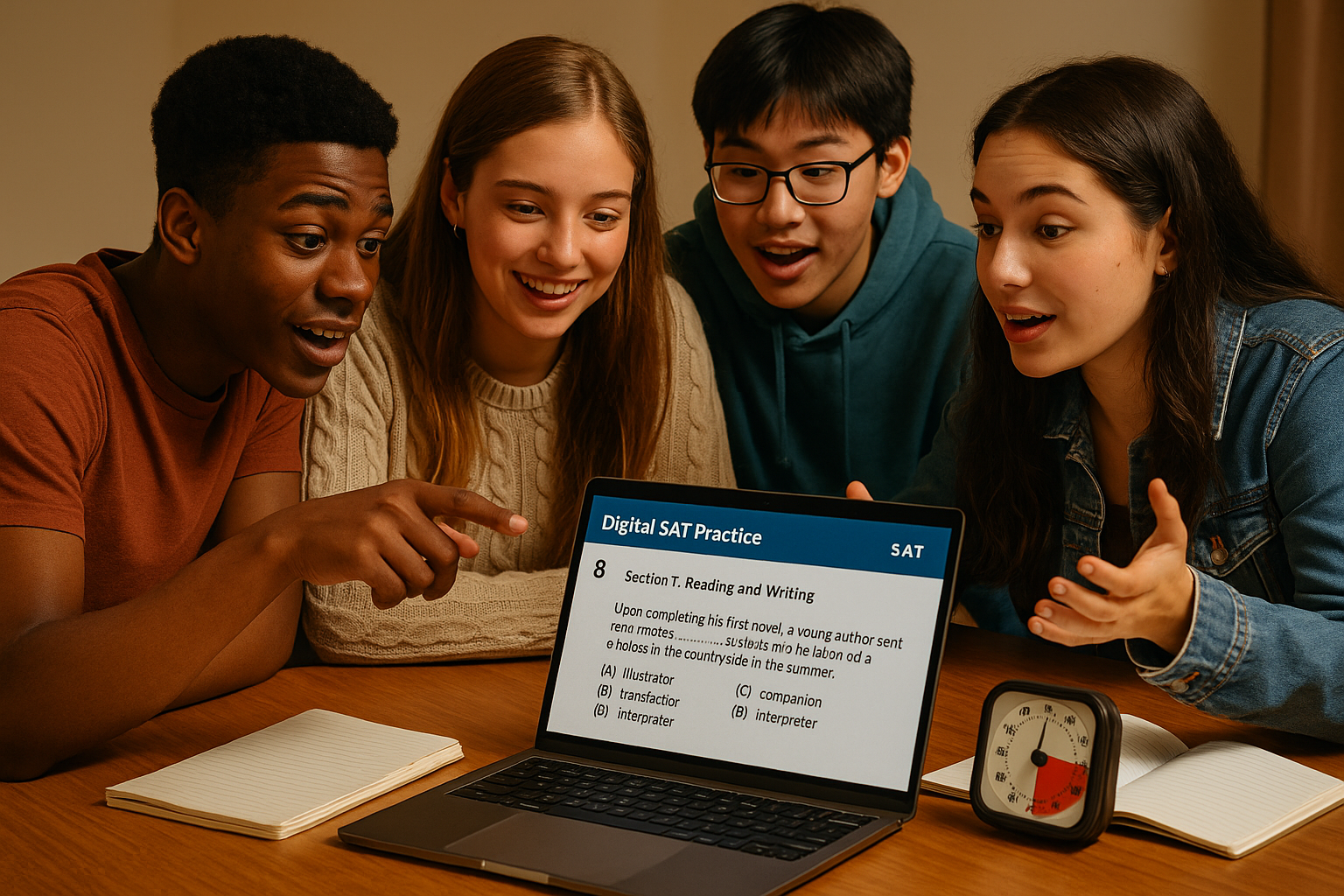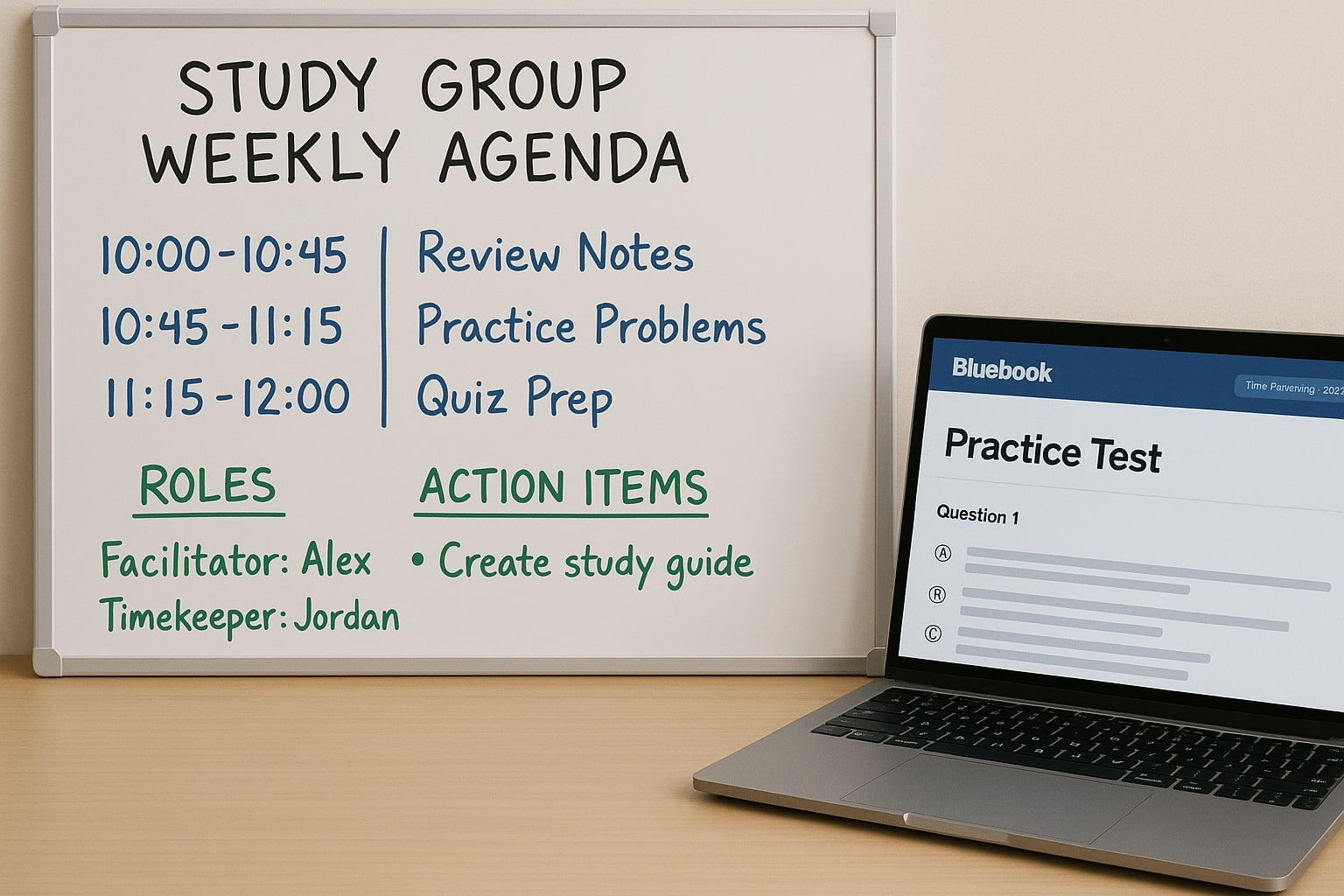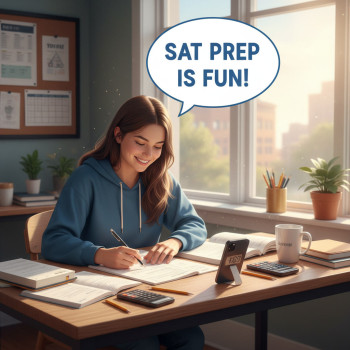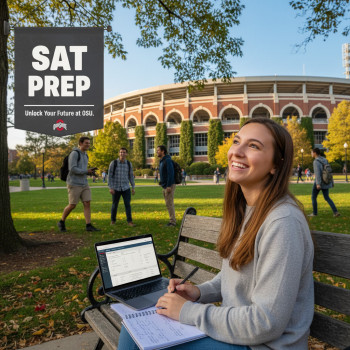Why study groups can be a game-changer for Digital SAT prep
Studying for the Digital SAT doesn’t have to be a lonely sprint. In fact, some of the most efficient, motivating, and sustainable study plans are built around other people. A study group can provide accountability, fresh perspectives, and opportunities to teach and be taught — which is one of the fastest ways to lock in knowledge. When organized well, a group becomes more than a collection of students: it becomes a learning engine. This article shows you how to turn casual meetups into high-impact SAT sessions, whether you’re prepping solo between classes or pairing group work with personalized help like Sparkl’s one-on-one guidance and tailored study plans.
Start with the right group: size, mix, and shared goals
Not all groups are created equal. The first step is to form a group that balances focus with diversity.
Ideal group size
- 3–6 members: Small enough for everyone to participate; large enough to provide varied problem-solving approaches.
Skill mix
Look for a mix of strengths. If everyone in your group is strongest at algebra but weak at evidence-based reading, you’ll stagnate. Pair students who excel in different sections so you can swap expertise. Diversity in strengths lets members teach each other — and teaching is one of the best ways to retain material.
Shared goals and timelines
Discuss timelines (e.g., target test date) and score goals early. Are you aiming for incremental improvement over six months or an aggressive jump in two months? Aligning on objectives helps structure sessions and measure progress.
Set a structure: roles, rules, and routines
Great groups are part social, part disciplined. Use simple structures to keep meetings productive.
Clear roles
- Facilitator: Keeps the agenda and time.
- Question curator: Brings practice problems or selects Bluebook sections for review.
- Timekeeper: Ensures balanced participation and stuck-on problems don’t eat the meeting.
- Note-taker: Records strategies, mistakes, and action items.
Basic ground rules
- Arrive prepared — have your practice test passage or problem ready.
- Phones on silent; use devices only for practice resources or timing.
- Respect speaking time: the goal is shared understanding, not monologues.
- Be generous with feedback: critique strategies, not people.
Session templates: what a productive study group meeting looks like
Below are three session templates you can rotate weekly. Each template serves a different learning objective: review, problem-solving, and test simulation.
1) Rapid Review (60–75 minutes)
- 10 min — Warm-up: quick question of the day (mixed section).
- 30 min — Targeted concept review (one member teaches a concept: e.g., command of evidence, quadratic functions, or digital test navigation tips).
- 15 min — Problem set (3–4 problems solved collaboratively).
- 10 min — Reflection and action items (what to practice before next meeting).
2) Deep Dive (90–120 minutes)
- 15 min — Check-in and mini diagnostic (one short section or 10 questions).
- 60–75 min — Intensive walkthrough of missed or hard questions; members teach their solution paths.
- 15–30 min — Strategy focus (time management, reading approach for digital format, answer elimination techniques).
3) Mock Test + Debrief (3–4 hours total)
- Complete a timed section or full practice test on Bluebook (or split across meetings).
- Immediate 30–60 minute debrief: identify pacing issues, common errors, and content gaps.
- Assign targeted practice for next session.
Tools and resources to use in your group
You don’t need fancy tools — just the right ones. Use official digital practice materials and tools that match the Digital SAT environment.
- Bluebook practice tests: for realistic, adaptive practice.
- Student Question Bank or official practice question sets: to target specific skills.
- Timer apps or a shared stopwatch for strict pacing exercises.
- Shared documents or a group note file to collect strategies, error patterns, and assigned practice problems.

The art of teaching peers: small moves that make a big difference
Explaining how you solved a question is pure study gold. When members teach, they surface hidden assumptions and solidify their own understanding. Keep peer-teaching effective with these habits.
- Explain your reasoning step-by-step, out loud. Don’t just give the answer.
- Use the Socratic method: ask guiding questions rather than handing over solutions.
- Compare solution paths: algebraic vs. graphical approaches, or keyword parsing in reading passages.
- Keep mistakes visible: display and analyze invited errors — these are learning opportunities.
Data-driven improvement: track progress the smart way
Progress without measurement is guesswork. A weekly snapshot of errors, timing, and content gaps helps your group prioritize what to study next.
Use a simple tracking table
Below is a sample template your group can adapt. Fill this after each major practice session.
| Member | Test/Section | Score / Accuracy | Top 3 Error Types | Time Management Notes | Action Items (before next meeting) |
|---|---|---|---|---|---|
| Alice | Reading | 22/38 | Command of evidence, inference, pacing | Spent too long on passage 2 | Practice timed passage sets; review inference strategies |
| Ben | Math – Heart of Algebra | 24/30 | Linear systems sign errors, careless arithmetic | OK pacing, but re-check arithmetic | Do 10 linear systems; accuracy drills |
How often should your group meet?
Frequency depends on your timeline. Here are practical guidelines:
- 6+ months out: 1–2 times per week for 60–90 minutes — focus on skills and habits.
- 2–4 months out: 2 times per week with one mock test every 10–14 days.
- Last month: Weekly mock tests and targeted weak-point drills; shorter weekly sessions to review mistakes.
Consistency beats cramming. Even a single steady group meeting each week is more valuable than irregular marathon sessions.
Common pitfalls and how to avoid them
Even well-intentioned groups can go off the rails. Here are common traps and simple fixes.
Pitfall: sessions turn social, not study-focused
Fix: Start each meeting with a one-sentence check-in and a timer. The facilitator enforces focused blocks of study and a short social wrap-up at the end.
Pitfall: everyone does the same weak practice
Fix: Use data from timed sections to assign targeted homework. If everyone misses inference questions, rotate who leads an inference deep dive next meeting.
Pitfall: lack of individual accountability
Fix: Assign action items with measurable outcomes (e.g., “Complete 20 algebra practice questions with ≥90% accuracy”). Follow up at the start of the next meeting.
Make the Digital SAT format work for you
The Digital SAT has a different feel from the paper test: screen navigation, adaptive question flow, and device readiness matter. Use your group to simulate those conditions.
- Practice on Bluebook so everyone gets comfortable with the interface and on-screen tools.
- Work on pacing with the digital timing cues; practice switching between passages and questions quickly.
- Share device tips: how to highlight, annotate, or use the built-in calculator efficiently.
When to combine group work with personalized tutoring
Group prep covers many bases, but some students benefit from occasional targeted, individualized instruction. If a concept repeatedly stumps the group, it might be time for a short tutoring session. Personalized tutoring, such as Sparkl’s tailored one-on-one guidance and AI-driven insights, can diagnose stubborn weaknesses quickly and return you to group study with focused strategies. Use tutoring sparingly and intentionally — for skill gaps that group teaching can’t close efficiently.
Real-world examples: three scenarios that show group work in action
Scenario 1 — The Slow Reader
Marisol consistently ran out of time in reading. The group recorded her timed passage attempts and noticed she spent 60% of time on the first two paragraphs. They introduced a pacing plan: read for 2–3 minutes to get gist, then annotate only key lines. After three weeks of targeted timed practice and peer feedback, her reading time per passage dropped by 20% and accuracy rose.
Scenario 2 — The Algebra Conundrum
Devon could solve equations but made careless sign errors. The group instituted a two-step habit: after solving, read the question again and plug the answer back into the original equation. A peer tutor (a group member strong in algebra) modeled this habit for a month, and Devon’s accuracy improved significantly.
Scenario 3 — Pacing and Stamina
Alice and her teammates could solve problems accurately but struggled to sustain focus through a full test. The group began monthly full-section Bluebook practice under test-like conditions and used short post-test debriefs to analyze stamina dips. Over two months they built endurance and improved score consistency.
Measuring success: more than just score gains
Of course, rising scores are the goal — but success is also about confidence, test-day calm, and better study habits. Track these qualitative outcomes alongside quantitative scores:
- Increased consistency under timed conditions
- Faster recovery from difficult passages
- Reduced test anxiety due to familiarity with the digital interface
- Clearer study plans and better use of practice resources
Final checklist to run your best SAT study group
- Pick 3–6 committed members with complementary strengths.
- Agree on a target date and score range.
- Assign roles and set basic rules for punctuality and focus.
- Use Bluebook and official practice questions to mirror the Digital SAT.
- Rotate session types: rapid review, deep dive, and mock tests.
- Track progress with a simple table and set measurable action items.
- Bring in personalized tutoring like Sparkl’s when persistent gaps need expert diagnosis.

A quick sample eight-week group plan
Use this high-level plan if your test is about two months away. Tailor intensity based on your baseline diagnostic.
| Weeks | Main Focus | Group Activities | Individual Homework |
|---|---|---|---|
| 1–2 | Baseline & Foundations | Baseline full-section Bluebook; identify gaps; skills workshops | Targeted skill practice (20–30 min/day) |
| 3–4 | Strategy & Problem Solving | Deep dives on weak areas; timed sets | Do focused problem sets and flashcards |
| 5–6 | Mock Tests & Pacing | Biweekly mock sections; pacing drills | Review missed questions; short tutoring if needed |
| 7–8 | Fine-Tuning & Confidence | Final mocks; technique polishing; test-day checklist | Light practice; rest and mental prep |
Closing thoughts: collaboration elevates preparation
Studying for the Digital SAT is both an individual challenge and a social opportunity. A well-run study group creates accountability, speeds up problem-solving, and injects diverse strategies into your preparation. It also mimics real-world learning — people teach, learn, and adapt together. When you combine that social learning with occasional expert input, like Sparkl’s tailored tutoring or AI-informed study plans, you get the best of both worlds: human motivation plus targeted expertise. So gather a few committed peers, agree on goals, and use the structures above — your best score might come from the collaboration you build along the way.
Ready to get started? Pick a meeting time, assign roles, and run your first Rapid Review. Keep it simple, be consistent, and let the group’s momentum carry you forward. Good luck — you’ve got this.



















No Comments
Leave a comment Cancel